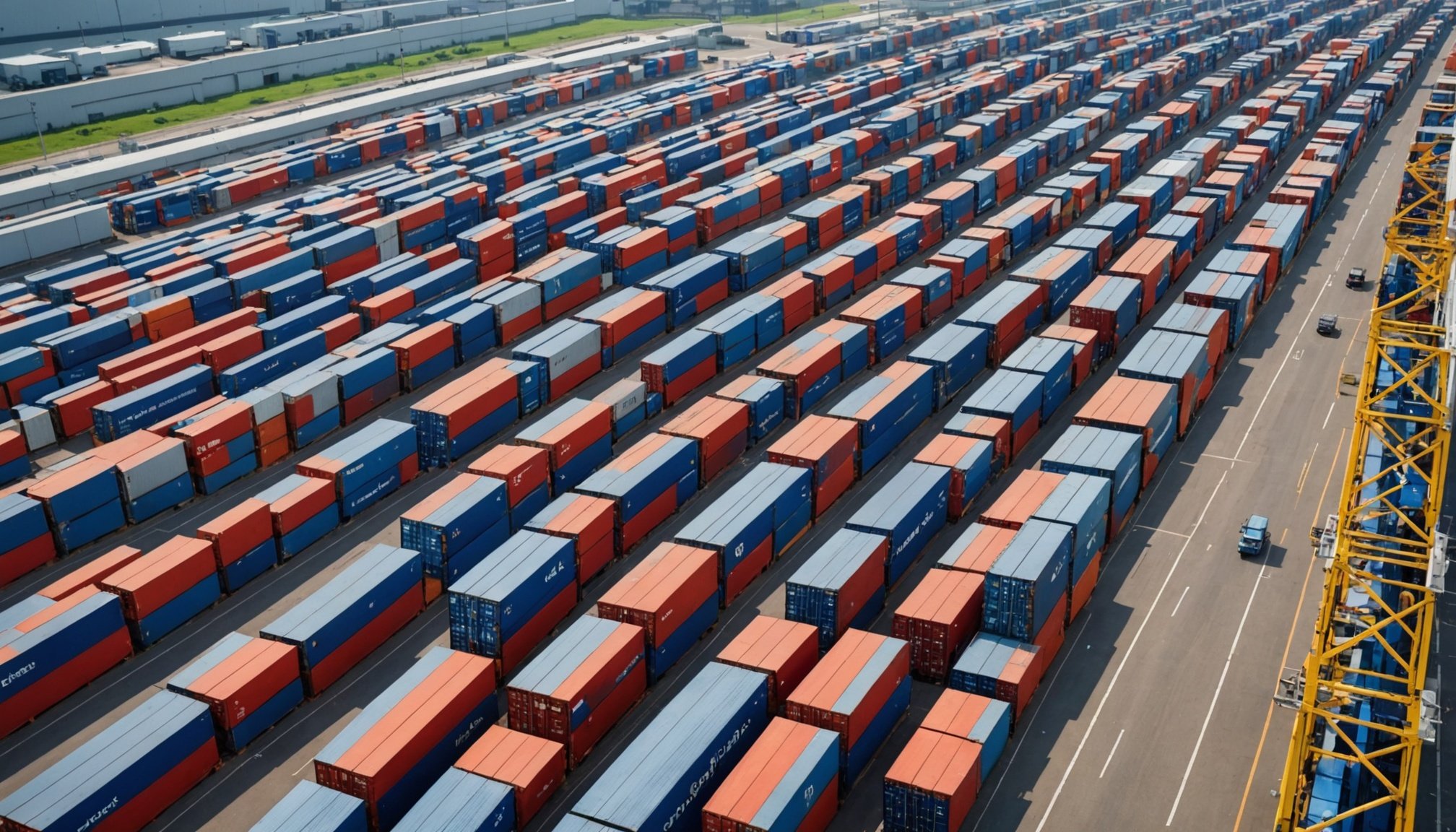Understanding Data Analytics in Logistics
In today’s dynamic environment, data analytics has become instrumental in transforming the logistics sector. It’s not simply about collecting data but analysing it to enhance decision-making. Leveraging this capability, companies can uncover patterns and trends that were previously hidden, leading to supply chain optimization.
The driving force behind this transformation is logistics technology. Key technologies such as artificial intelligence, machine learning, and the Internet of Things (IoT) are revolutionising how data is gathered and processed. These innovations ensure that massive datasets can be analysed in real-time, providing actionable insights that can streamline logistics operations.
Topic to read : Transforming customer service in the uk it sector: essential ai strategies for success
What are the primary benefits of integrating data analytics into logistics processes? Among the many advantages, reducing operational costs and improving delivery times stand out. By efficiently forecasting demand, companies can optimise inventory levels and allocate resources more effectively, reducing waste and enhancing overall efficiency.
Data analytics also aids in improving customer satisfaction. With the ability to track deliveries and predict delays, companies can communicate transparently with their clients, building trust and ensuring a seamless experience. Moreover, analytics can identify potential risks in the supply chain, allowing for proactive measures to mitigate disruptions.
In parallel : Maximizing customer feedback: a comprehensive guide for uk saas companies to drive continuous improvement
In essence, embracing data analytics and logistics technology is not just a trend but a necessity for businesses aiming for competitive advantage in the logistics sector.
Strategies for Implementing Data Analytics
Implementing data analytics effectively requires a structured approach to fully harness its potential. Organizations often begin by defining key performance indicators (KPIs) that align with their strategic goals. KPIs are essential as they provide measurable values critical for assessing performance and driving operational improvement. Identify KPIs by understanding what success looks like for your business and how data indicators can guide you towards achieving it.
Identifying Key Performance Indicators (KPIs)
KPIs focus attention on what matters most. First, pinpoint business objectives. Then, determine which data metrics best reflect these goals. High precision in tracking KPIs enables businesses to make informed decisions and measure success accurately.
Building a Data-Driven Culture
Establishing a data-driven culture is vital for the success of analytics initiatives. This involves encouraging an organization-wide embrace of data. Provide training and resources to ensure everyone understands the value of data insights. Promote collaboration and transparency, allowing teams to seamlessly access and utilize data for better decision-making.
Integrating Analytics with Existing Systems
Successful integration of analytics systems hinges on seamless coordination. Start by evaluating existing frameworks and identifying gaps. Choose tools that complement current systems. Prioritize interoperability and ensure adequate data flow across platforms. Align KPIs with these integrations to maintain operational consistency and drive improvement through accurate insights.
Case Studies of Successful Data Analytics Applications
In the competitive world of logistics, case studies offer profound insights into how companies harness data analytics for success. One notable example is how top logistics firms, such as DHL, have transformed operations through data-driven decision-making. By leveraging real-time data on delivery routes and customer preferences, these companies optimise vehicle paths, reducing fuel consumption and delivery time.
Metrics play a pivotal role in evaluating the success of data strategies. Companies use Key Performance Indicators (KPIs) such as delivery accuracy and customer satisfaction to gauge effectiveness. For instance, a marked increase in on-time deliveries and positive customer feedback signifies successful implementation of analytics.
The insights derived from these success stories can be a treasure trove for other organisations. For example, a logistics company might learn the importance of investing in sophisticated analytics software to gain predictive insights into demand fluctuations. Another company may realise the value of training employees to interpret data effectively and make informed decisions.
These case studies not only highlight the transformative power of data analytics but also offer practical solutions and strategies that can be adapted across different sectors. Adopting similar approaches can significantly augment efficiency and client satisfaction.
Best Practices for Data Analytics in Logistics
When integrating data analytics into logistics, adhering to best practices ensures enhanced logistical efficiency and robust data management. Effective strategies consider technologies, personnel development, and analytics utilisation.
Ensuring Data Quality and Integrity
Maintaining superior data quality standards is crucial. Implement automated validation techniques for real-time monitoring and to manage data inconsistencies. Design standardized data entry processes to minimize human errors, reinforcing data integrity across systems.
Regular Training and Development
Continuous education in data analytics tools and methodologies keeps logistics teams updated. Staff must remain proficient in leveraging new technologies for optimum data management. Regular workshops and training programs are advised to ensure teams adapt to evolving analytics landscapes, contributing effectively to viability and progress.
Utilizing Predictive Analytics
Predictive analytics empowers logistics operations with precise forecasting and planning. By analyzing historical data, logistics companies can anticipate demand trends, optimize routes, and manage inventory effectively. Predictive models offer insights, allowing companies to enhance logistical efficiency and resource allocation. Advanced analytics techniques further ensure data is not only historical but a predictive tool for strategic decisions.
Incorporating these best practices forms a foundation for streamlined logistics processes, driven by data insights and strategic foresight, contributing to improved operational efficiency.
Tools and Techniques for Data Analytics
In the realm of logistics analytics, selecting the right analytical tools and software solutions is pivotal for effective data processing. Popular platforms like Tableau and Power BI cater to diverse needs by offering robust data visualization techniques that enhance comprehension of complex datasets. These tools empower users to transform raw data into compelling visuals, facilitating quicker and more informed decision-making.
Overview of Tools
In the industry, leading software solutions like SAP and SAS are lauded for their comprehensive analytics capabilities. These platforms not only process large volumes of data efficiently but also integrate seamlessly into existing systems, proving invaluable in refining logistic operations. Their popularity lies in their adaptability to a variety of operational contexts, ensuring they meet specific business requirements.
Data Visualization’s Role
Data visualization techniques serve as the bridge between complex data sets and user-friendly insights. By converting intricate data into visual formats such as graphs and charts, these techniques allow stakeholders to easily interpret and analyze information, fostering enhanced strategic planning and operational efficiency.
Selecting the Right Tools
Choosing suitable analytical tools requires consideration of several factors, including your organization’s specific supply chain challenges, scalability, and user-friendliness. Prioritizing these criteria ensures that selected tools not only address current needs but also adapt to future expansions or innovations, ultimately optimizing the supply chain management process.
Challenges in Data Analytics Implementation
In the realm of data analytics implementation, organisations face several challenges, with data security and privacy concerns being among the most pressing. Ensuring that sensitive information remains protected is pivotal. Cyber threats and data breaches pose significant risks, compromising not only customer trust but also business continuity. Implementing robust encryption methods and maintaining strict access controls are essential measures in mitigating these risks. Regular audits and compliance with industry standards such as GDPR can establish a secure framework.
Data Security and Privacy Concerns
Security concerns revolve around data breaches and unauthorised access. It’s crucial to adopt a proactive stance in risk management, employing tools that offer real-time monitoring and threat detection. Furthermore, educating employees about cyber hygiene can prevent potential breaches.
Change Management Issues
Effective implementation often encounters resistance. Staff may be apprehensive about new systems affecting their roles. Clear communication and training programs can alleviate these fears, facilitating smoother transitions. Engaging employees in the process promotes acceptance and eases the integration of new solutions.
Scalability of Solutions
For a successful data strategy, choosing scalable solutions is vital. Evaluate tools for their capacity to evolve alongside business needs. Scalable tools ensure that data analytics infrastructure can handle increased data volumes without compromising performance, ensuring future-proof systems.
Future Trends in Data Analytics for Logistics
The logistics industry is on the brink of transformation with the advent of emerging technologies and evolving data analytics. Key among these advancements are anticipated breakthroughs in AI and machine learning, which promise to redefine logistics analytics processes.
AI and machine learning are set to revolutionise data handling by offering predictive insights that bolster decision-making capabilities. Expectations are high for these technologies to enhance areas like delivery route optimisation and inventory management. By identifying patterns and trends within vast data sets, AI aids in pre-empting potential disruptions, significantly improving efficiency.
To adapt to this logistics evolution, companies must prepare proactively. Embracing new analytics tools and techniques is crucial. Organisations should invest in training and development initiatives to equip their workforce with necessary skills. Understanding and implementing these emerging technologies will be pivotal in maintaining competitive advantage.
Future trends in logistics will also likely include digital twins and blockchain technology. Although still nascent, these technologies already hint at impactful potential changes. With digital twins providing real-time simulation capabilities and blockchain offering enhanced transparency and security in supply chains, the logistics landscape is poised for profound advancements. Remaining attuned to these trends ensures strategic readiness for forthcoming industry shifts.











